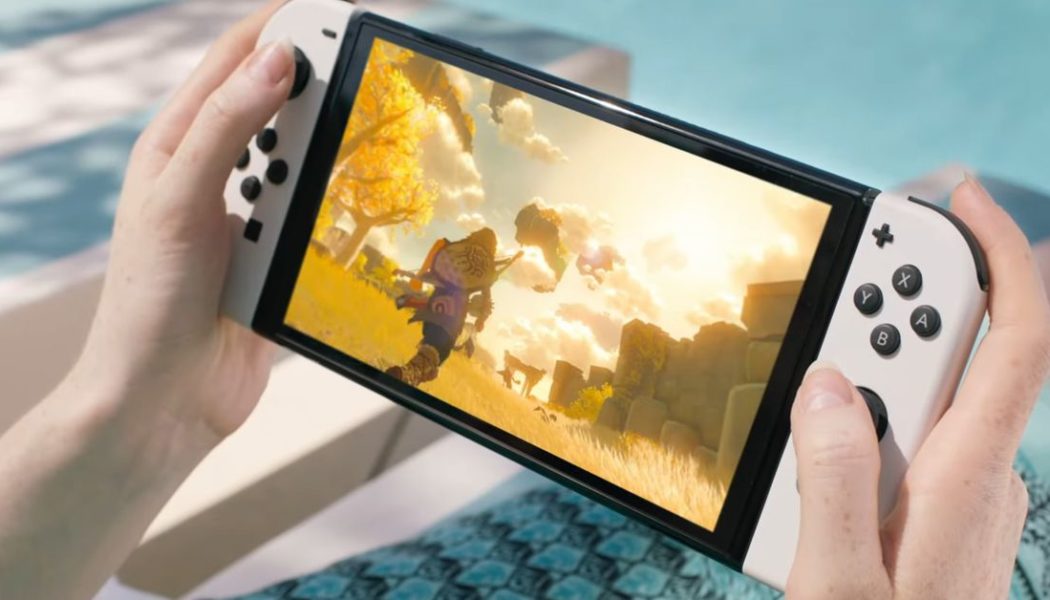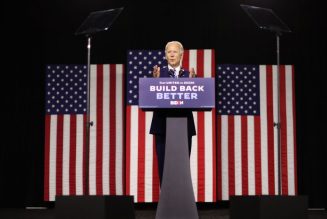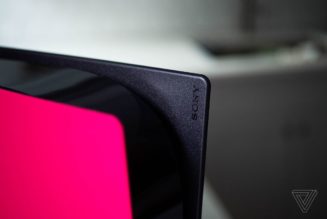
The Nintendo Switch is fine. Like Alex says, there’s no pressing reason for Nintendo to replace it right now. But does that mean today’s new OLED variant has utterly dashed our dreams of a more powerful Switch Pro, one that might play games like Xenoblade Chronicles 2, Hyrule Warriors, and Persona 5 Strikers without chugging?
I wouldn’t rule out a Switch Pro just yet, partly because I have a hard time believing Nintendo can resist pumping out as many models as the market will hold:
And partly because, if I were Nintendo, I’d be saving a Switch Pro for a moment it’ll truly count.
Today, Nintendo would have to battle chip shortages and the pandemic game development slowdown to replace a console that’s… already flying off the shelves? But fast forward to 2022, and the company might have a more pressing reason to make a Switch with more horsepower.
An easy choice
If we assume the rumors are true, Nintendo has been toying with a more powerful Switch for several years now, but repeatedly decided to hold back. In March 2019, longtime game industry reporter Takashi Mochizuki wrote that a new Switch would have “enhanced features targeted at avid videogamers,” only for Nintendo to announce a model that simply added additional battery life. This March, Mochizuki got far more specific about a new OLED Switch due this year. One with “an upgraded Nvidia Corp chip with better graphics and processing” and 4K graphics when streamed on the TV thanks to Nvidia DLSS. But as we now know, the OLED model doesn’t have a new CPU, period. It’s got the same guts.
You can argue that’s because the Switch doesn’t really need a new chip — and we do argue it, right here — but Nintendo might have had an uphill battle to get new CPUs to begin with.
Remember, we’re in the middle of a historic chip shortage, a shortage with seemingly no end in sight, where giant companies are buying up all the chip-building capacity they can from an incredibly small number of players that actually produce the silicon. TSMC, which reportedly produces 92 percent of the world’s cutting-edge chips (and as much as 60 percent of the rest) is said to be prioritizing Apple and hard-hit automakers over other firms.
Even if Nvidia designed a new Tegra processor, built some sample parts, and Nintendo designed a new Switch Pro around it, that doesn’t mean Nintendo’s suppliers could necessarily produce the chips — particularly not at the quantities you’d need to meet demand and fill store shelves. There could be dire Switch Pro shortages, not unlike the shortages we’ve been seeing for the PS5, Xbox Series X, and every single decent Nvidia and AMD graphics card now.
But Nintendo doesn’t need to fight for additional capacity if it sticks with today’s Nvidia Tegra chips. It just needs TSMC to keep the existing chips coming, where it’s already got quite a bit of capacity: the production lines now provide enough chips for over 28 million consoles a year.
Besides, while Nintendo has successfully surfed shortage waves in the past to drum up tremendous sales (most famously with the Nintendo Wii but also the early Switch), a Switch Pro shortage might hurt more than it helps.
The existing Nintendo Switch has been the best-selling console in the US for 30 months in a row, and global sales were up 44 percent in the first three months of the year. Nintendo probably doesn’t want to risk that momentum with a mixed message about how you can’t easily buy a Switch, or how the new more powerful Switch may or may not play the same games as the old one (a mistake it made with the Wii U, and arguably with the New Nintendo 3DS). It’s also not clear if Nintendo has any games ready to show off and justify the power of a Switch Pro anyhow — the Breath of the Wild sequel is now due in 2022, we’ve heard little about Metroid Prime 4 since Nintendo rebooted development back in 2019, and Bayonetta 3 still doesn’t have a release date. While it’s possible Nintendo has surprises up its sleeves, the pandemic hasn’t made game development easier.
When Nintendo introduced its first Switch revisions in 2019, and again today, experts explained that mid-cycle refreshes are designed primarily to keep the momentum going. Nintendo’s done this with portables for years, NPD analyst Mat Piscatella explains:
Back in the day, Nintendo portable revisions would stabilize the demand curve and firm up ASPs. They were about maintaining sales performance, and preventing the pull of price drops and stale inventory. The Switch OLED is right out of this successful playbook.
— Mat Piscatella (@MatPiscatella) July 6, 2021
And while the OLED Switch doesn’t need a new Nvidia chip to keep that momentum today, there’s nothing stopping Nintendo from dropping a new processor into that OLED Switch (perhaps even literally) in the future, if Nintendo feels the need.
One of the striking things about the full-size Nintendo Switch’s refresh in 2019 was just how little the internal design changed. We dove through teardown photos back then, and the new motherboard and processor almost looked like a drop-in replacement: same size, same layout, same battery.
Perhaps next year — when Nintendo’s once again feeling the pressure to keep Switch sales high, no longer needs to fight for chips, and has a system-selling video game like the Breath of the Wild sequel primed and ready to go — it’ll try again. Nintendo can drop that new-and-improved Nvidia Tegra chip into this year’s OLED-equipped Switch, give it a snappy name like New Nintendo Switch i Max Plus Remake Intergrade, maybe add some Bluetooth headphone support, and call it a day.










